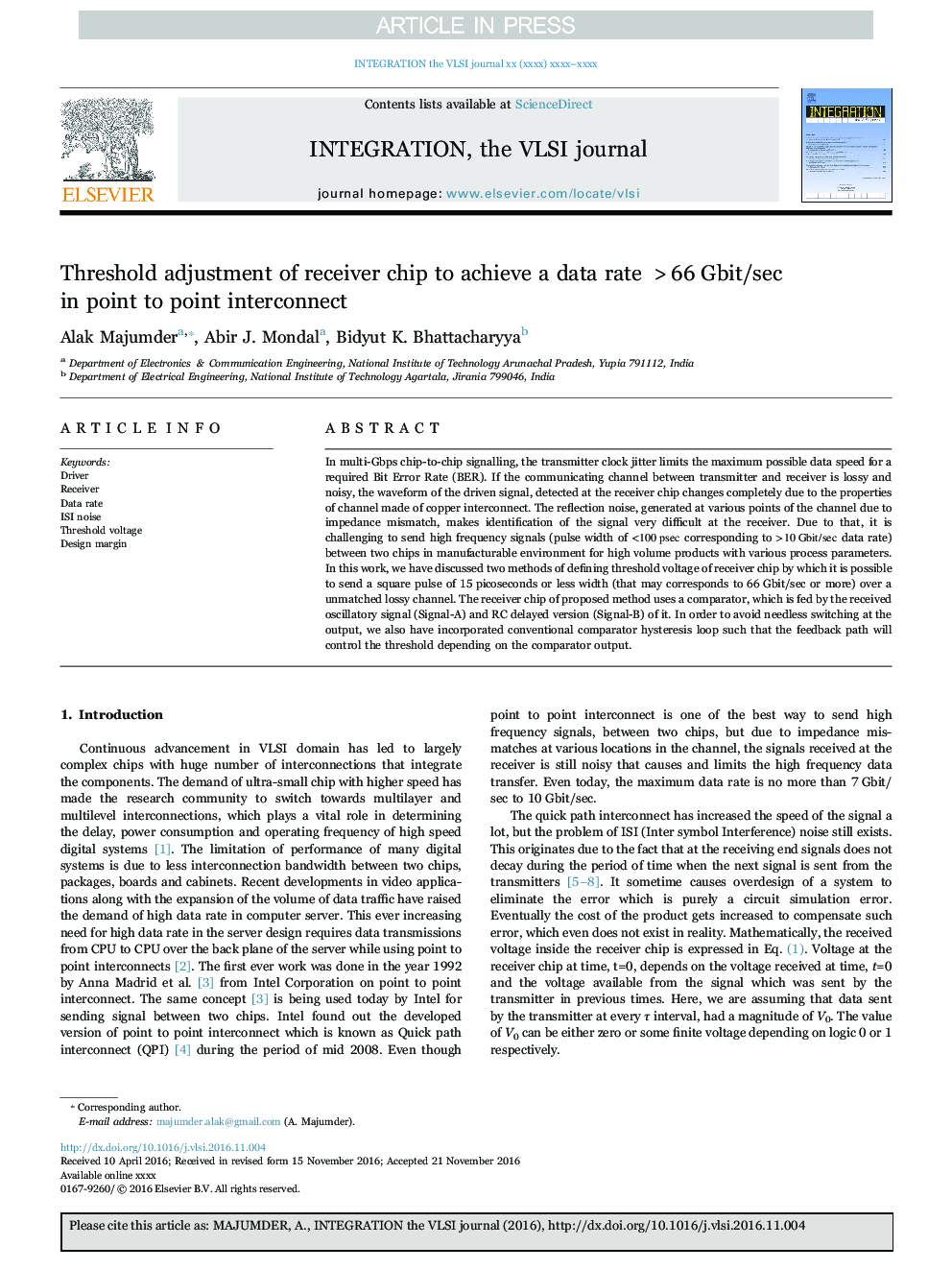| Article ID | Journal | Published Year | Pages | File Type |
|---|---|---|---|---|
| 4970632 | Integration, the VLSI Journal | 2017 | 8 Pages |
Abstract
In multi-Gbps chip-to-chip signalling, the transmitter clock jitter limits the maximum possible data speed for a required Bit Error Rate (BER). If the communicating channel between transmitter and receiver is lossy and noisy, the waveform of the driven signal, detected at the receiver chip changes completely due to the properties of channel made of copper interconnect. The reflection noise, generated at various points of the channel due to impedance mismatch, makes identification of the signal very difficult at the receiver. Due to that, it is challenging to send high frequency signals (pulse width of <100psec corresponding to >10Gbit/sec data rate) between two chips in manufacturable environment for high volume products with various process parameters. In this work, we have discussed two methods of defining threshold voltage of receiver chip by which it is possible to send a square pulse of 15Â picoseconds or less width (that may corresponds to 66Â Gbit/sec or more) over a unmatched lossy channel. The receiver chip of proposed method uses a comparator, which is fed by the received oscillatory signal (Signal-A) and RC delayed version (Signal-B) of it. In order to avoid needless switching at the output, we also have incorporated conventional comparator hysteresis loop such that the feedback path will control the threshold depending on the comparator output.
Related Topics
Physical Sciences and Engineering
Computer Science
Hardware and Architecture
Authors
Alak Majumder, Abir J. Mondal, Bidyut K. Bhattacharyya,
